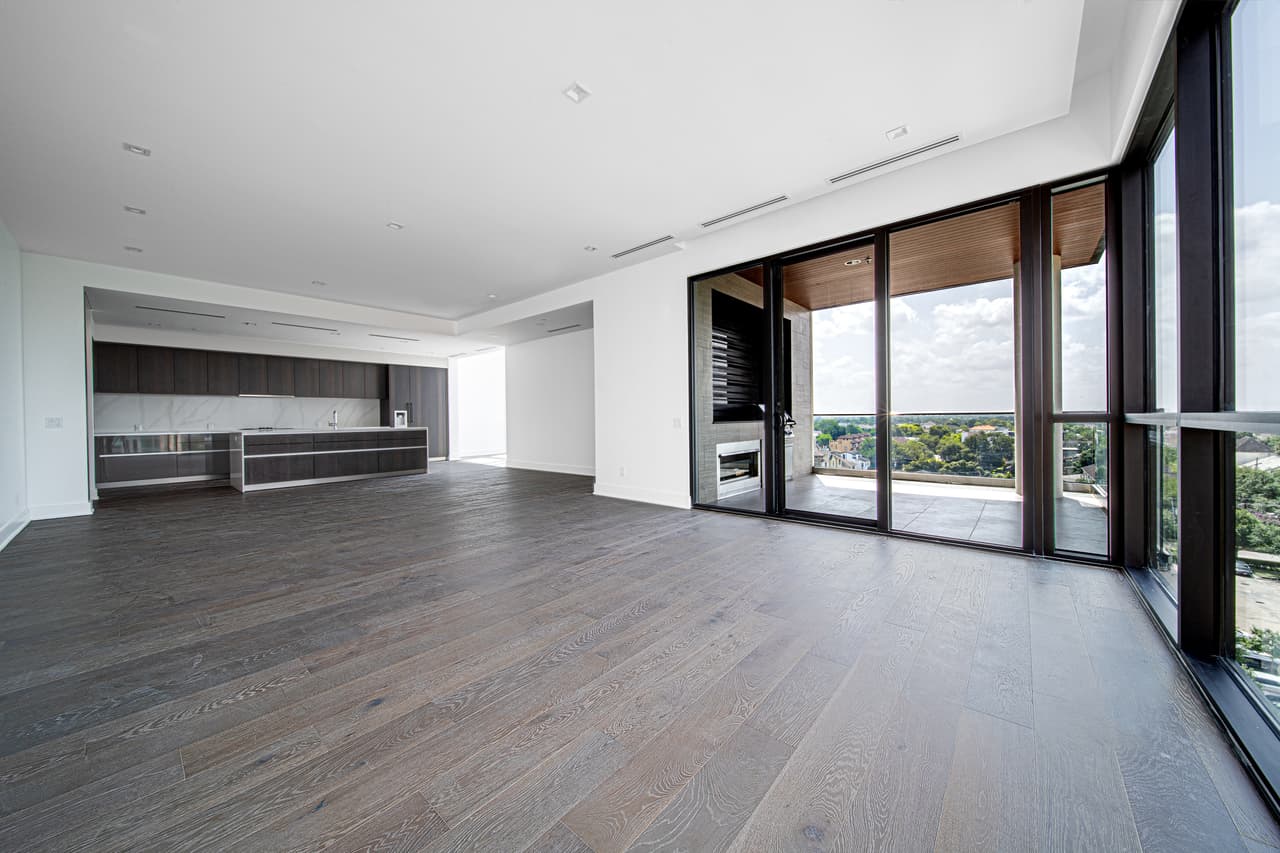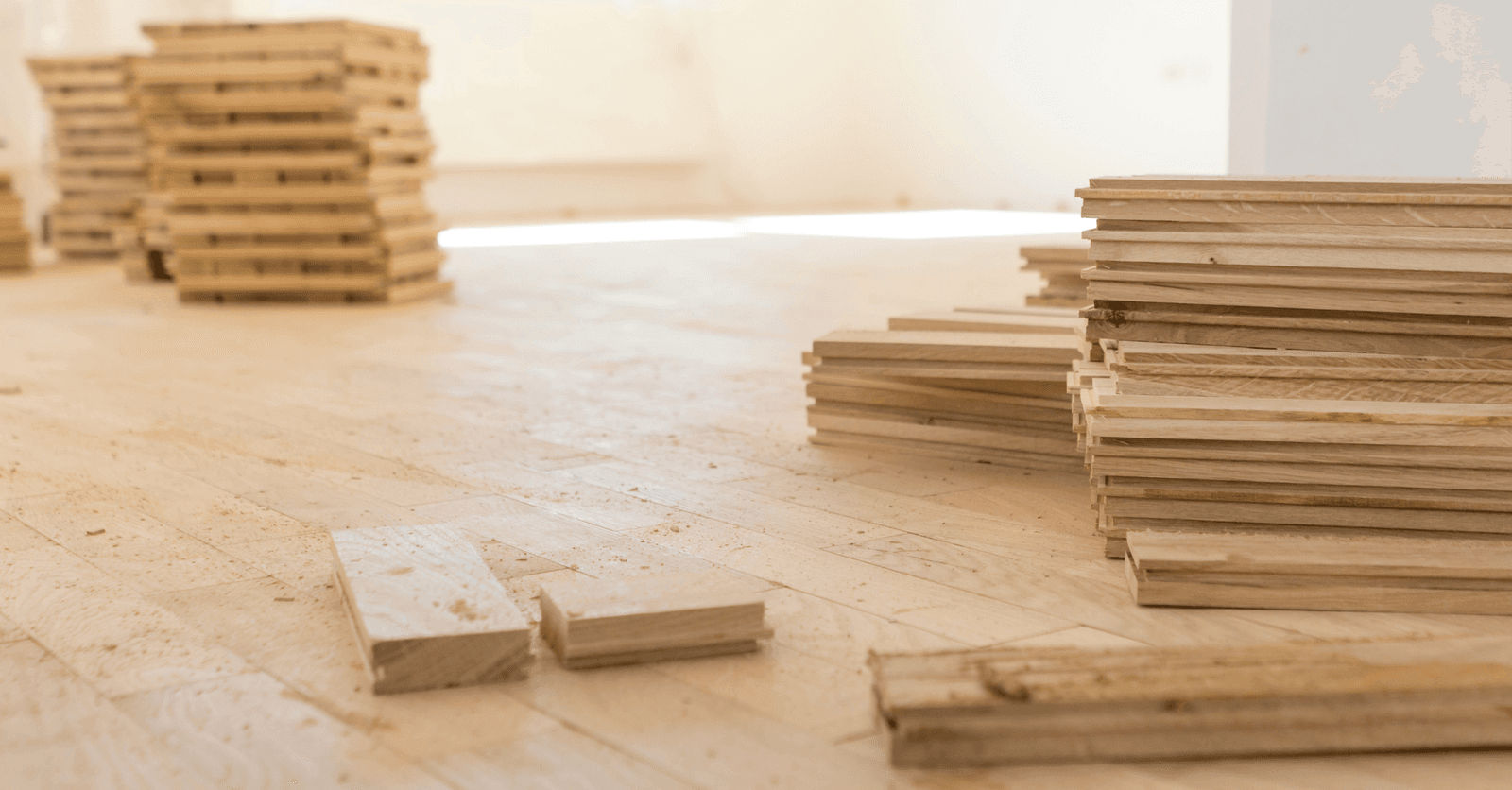How to Choose Your Floating Floor: The Characteristics
By Léa Plourde-Archer
Updated on August 2, 2024

The floating floor might sound like a magical concept but in fact, this installation method has become increasingly popular in the flooring market. Why, you ask? Well, floating floors are incredibly simple to install, and this can save ample time and money. It’s worth mentioning that floating floors are not a type of flooring, but instead, the installation method by which planks, boards or in some cases, tiles, attach to one another.
So you’ve decided you’re going to take on this home installation. Now what? The next step in the floating floor saga will be to choose the characteristics. These choices will include the type of wood or material the floating floor is made of. As this installation method has become common, there are several options available. Thus, you’re bound to find something that suits both your taste and budget!
Here’s how to choose the right floating floor for your home
Different types of floating floor materials
1) Wood
Engineered wood or wood that comes from deciduous trees (also known as leafy trees) offer a conventional look for the floor. If you decide to opt for coniferous wood, such as pine, your end result will be on the rustic front. There are plenty of wood options for floating floors and the most popular options are oak, pine, maple, cherry wood, and silver oak. In most cases, the flooring will be nailed or stapled down to a plywood substrate below. However, there are some brands on the market which can be installed as other floating floor materials. Remember, solid hardwood is never installed as a floating floor.
If you’re choosing between several grains or shades, consider asking the manufacturer if you’re able to take samples home. In doing so, you will be able to see which type of wood will give the best result. Of course, this will depend on the room where it’ll be installed, as well as the amount of natural and artificial light available in the space as well as surrounding areas.
2) Luxury Vinyl

Luxury vinyl is also known on the market as LVF, and this material is a very popular choice in the realm of floating flooring. In recent years, LVF has advanced its ability to handle moisture and is an excellent option if you’re looking for something slightly less expensive than engineered wood. This material has two options for installation. First, boards which snap together and second, boards glued down to a subfloor below. Tongues and grooves have been engineered into the boards so that they easily lock together.
3) Laminate
Laminate could be considered the original floating floor. This is because there are very few models on the market that are glued directly down to the subfloor and thus, almost every type of laminate is installed as floating. As worth mentioning is that laminate is a mutable material which changes as a result of warming or cooling temperatures and this is why the floating method of installation has long been favoured.
Ranking of wood floating floors
Floorboards are categorized according to a ranking system. This ranking system is especially pertinent if you are using wood as a floating floor material. Each type of wood has its own colouration and even when it’s been treated or coloured, knots or stains continue to have a tendency to peak through. Therefore, manufacturers classify wood according to the uniformity of the colour, as well as the presence of knots.
Since wood is a natural material, a lack of uniformity is to be expected. However, this can also be seen as an asset, since these details can create a look that is more authentic. If the rustic look is what you’re going for, pick a wood which that has more stains and knots on the surface.
Pros and Cons of floating floorings

Pros of floating flooring include the following:
Movement: Due to the unique installation method of floating floors, they allow for the expansion and contraction of the material. It’s common for a flooring material to move in response to changing temperatures, and thus the floating floor installation method is an excellent choice.
Simplicity: As we mentioned already, floating flooring is quite easy to install, even for the novice homeowner! There are plenty of obstacles when it comes to other flooring installation methods, as nailing hardwood is a difficult and time-consuming task for DIYers. With most floating flooring, there are no tools needed, as they easily snap together with nothing external required.
Inexpensive: For the most part, floating flooring is an affordable option. Further, since this is a DIY job, you are able to eliminate the need for paid labour.
Cons of floating floors include the following:
Quality: Although there are plenty of options on the market, the quality of floating floors has often been lacking when compared with stronger materials such as hardwood. Unfortunately, floating flooring can lead to lower resale value. However, in recent years floating flooring materials have greatly improved in quality.
Thickness: As with the above point, the materials used for floating flooring are often thin and not as substantial. Again, floating floor materials are making strides and this could easily change in due time.
Laying out a floating floor
Depending on the size of the room, the way the floorboards are installed can create the illusion that a room is either bigger or smaller than it is in reality. Whether you decide to set your floating floor lengthwise or widthwise, you shouldn't underestimate the impact that disposition can have on the appearance of the room.
As an example, if the room is very long and narrow, avoid installing the floorboards lengthwise. You will require significantly more boards than if you were to install them widthwise, costing time and money. The width of the floorboards will also affect the look of the room. Boards that are too small or too large can have a significant impact on the way the room will be perceived. When in doubt, ask for advice from a specialist. Most flooring stores offer a consulting service that could definitely come in handy with this project.
Finishing coat

Contrary to hardwood floors, it's not necessary to apply a finishing product (glossy, semi-gloss or matte) in order to prolong the floor’s durability. Applying a finish won't have a positive impact on the floor. This is because contrary to traditional wood, floating floors are an entity in and of themselves.
Maintenance
Cleaning and maintaining a floating floor is almost as easy as installing one. Hardware stores and flooring specialists sell plenty of products that will help give a nice glossy surface to the floor, although the effect will be short-lived. Different maintenance products are available on the market. Ask your flooring specialist which product they recommend.
Get 3 renovation quotes for your flooring project
RenoQuotes.com can help you get quotes for your flooring project. When you submit your project, we’ll connect you with top-rated contractors. Fill in the form on the homepage (it only takes a few minutes) to receive estimates from trusted professionals.
Dial 1-844 828-1588 to speak with one of our customer service representatives.
Looking for something else?
Related articles
The latest industry news, interviews, technologies, and resources.

Léa Plourde-Archer
•28 Aug 2024
Cherrywood, also known as yellow birch, is a light wood species known to be uniform in terms of tone, without being completely homogeneous. Its colour varies from pale white to dark brown and has more golden hues than oak or maple, for example.

Editorial Team
•17 Sep 2024
Engineered wood floors are most certainly the type of flooring you need. To ensure you’re choosing the best type of flooring for your interior living spaces, here are flooring-specific must-haves to stand the test of time, as well as installation tips.

Editorial Team
•03 Nov 2025
Water is essential to the wellbeing of humans, but as we know, this natural element can be both a blessing and a curse. Flooding is common in regions with high rainfall levels and proximity to large bodies of water.

Editorial Team
•07 Nov 2023
Homeownership almost always entails ongoing repairs, renovations, or upgrades. Note that on average, Quebecers allocate 64% of their residential energy expenditures to heating, and the costs can amount to $1,200 for an average-sized home. Surely, upgrading a heating system is a significant investment, but a wise decision in terms of energy conservation and minimizing consumption costs.

Editorial Team
•19 Dec 2024
For those who live in cities, having a large backyard often proves challenging. Unless you come across the perfect spot, you may very well have to deal with a property that offers a small garden space.